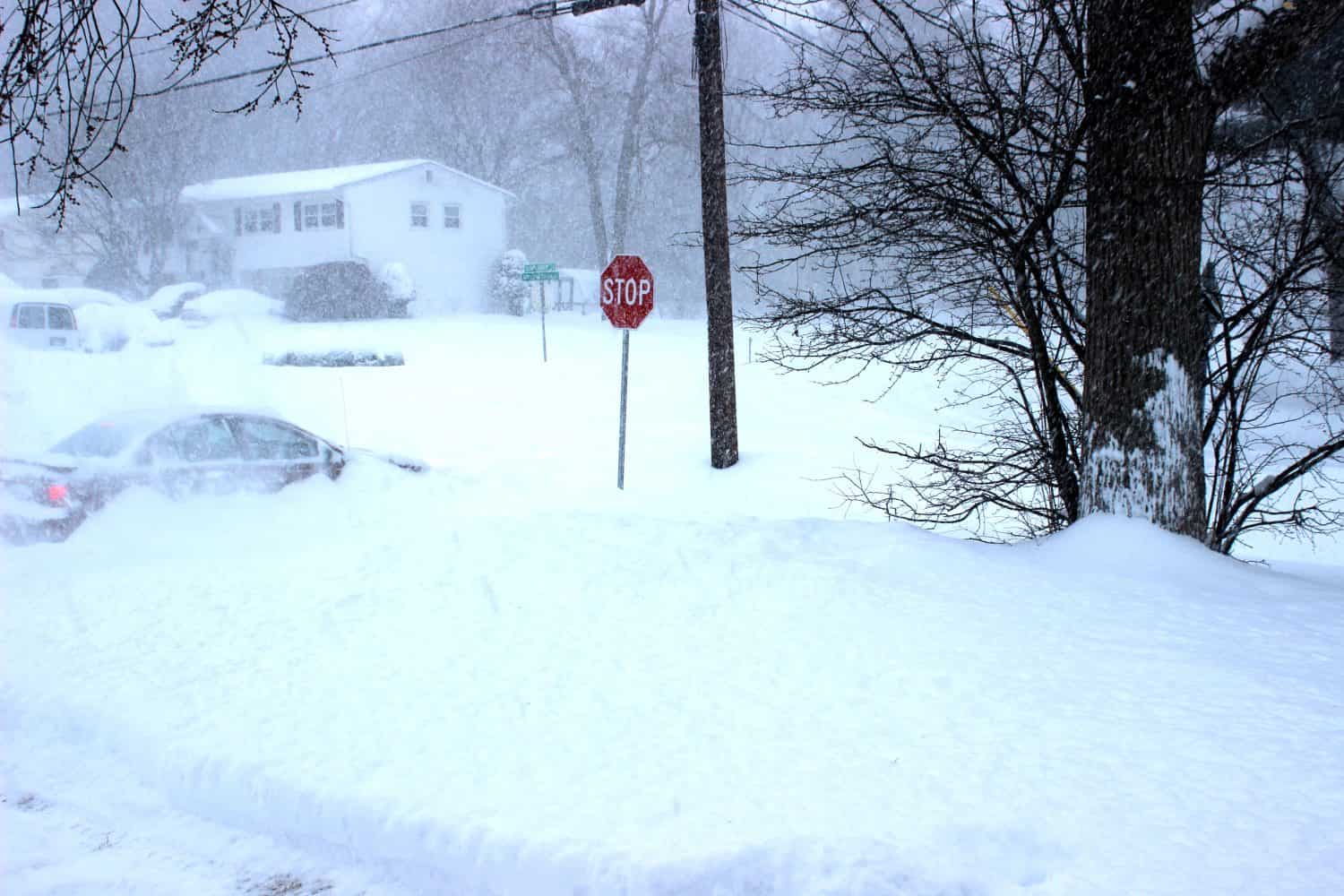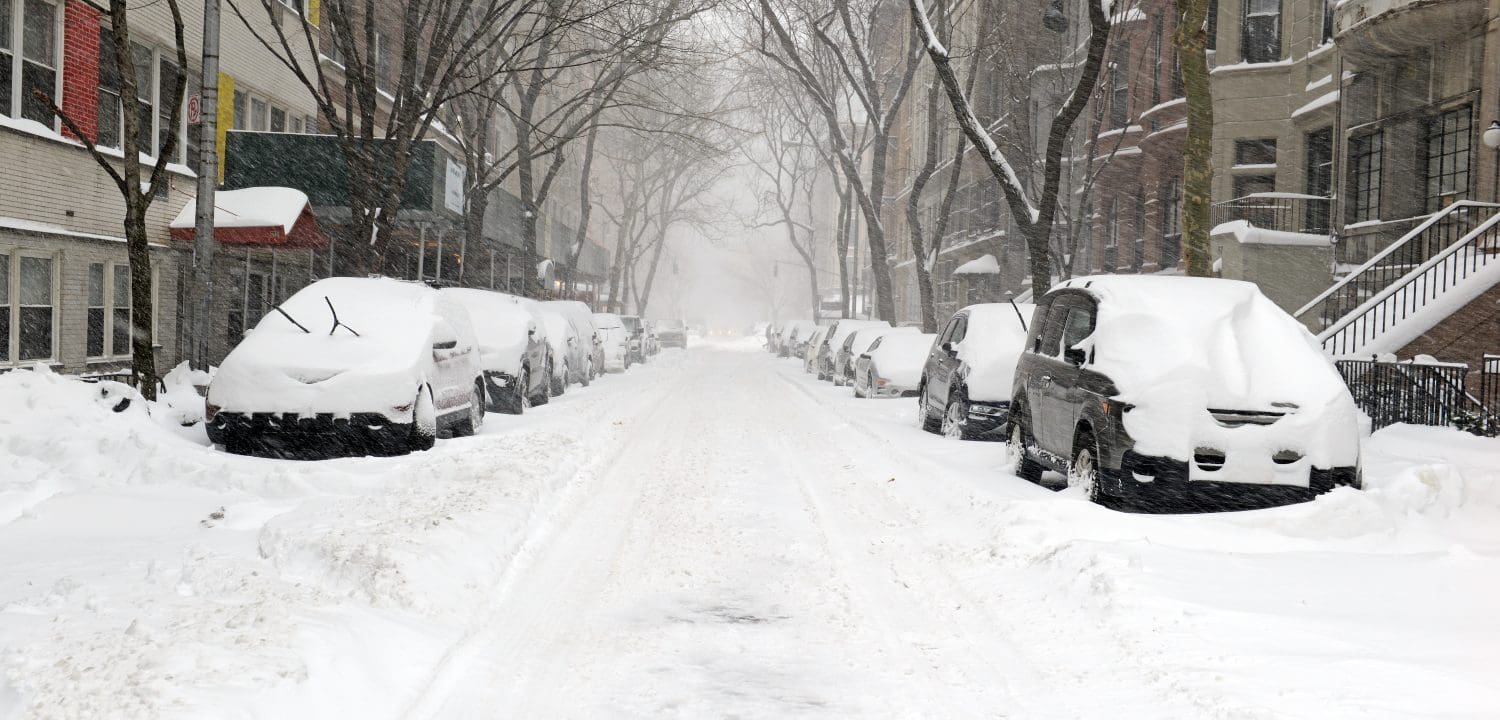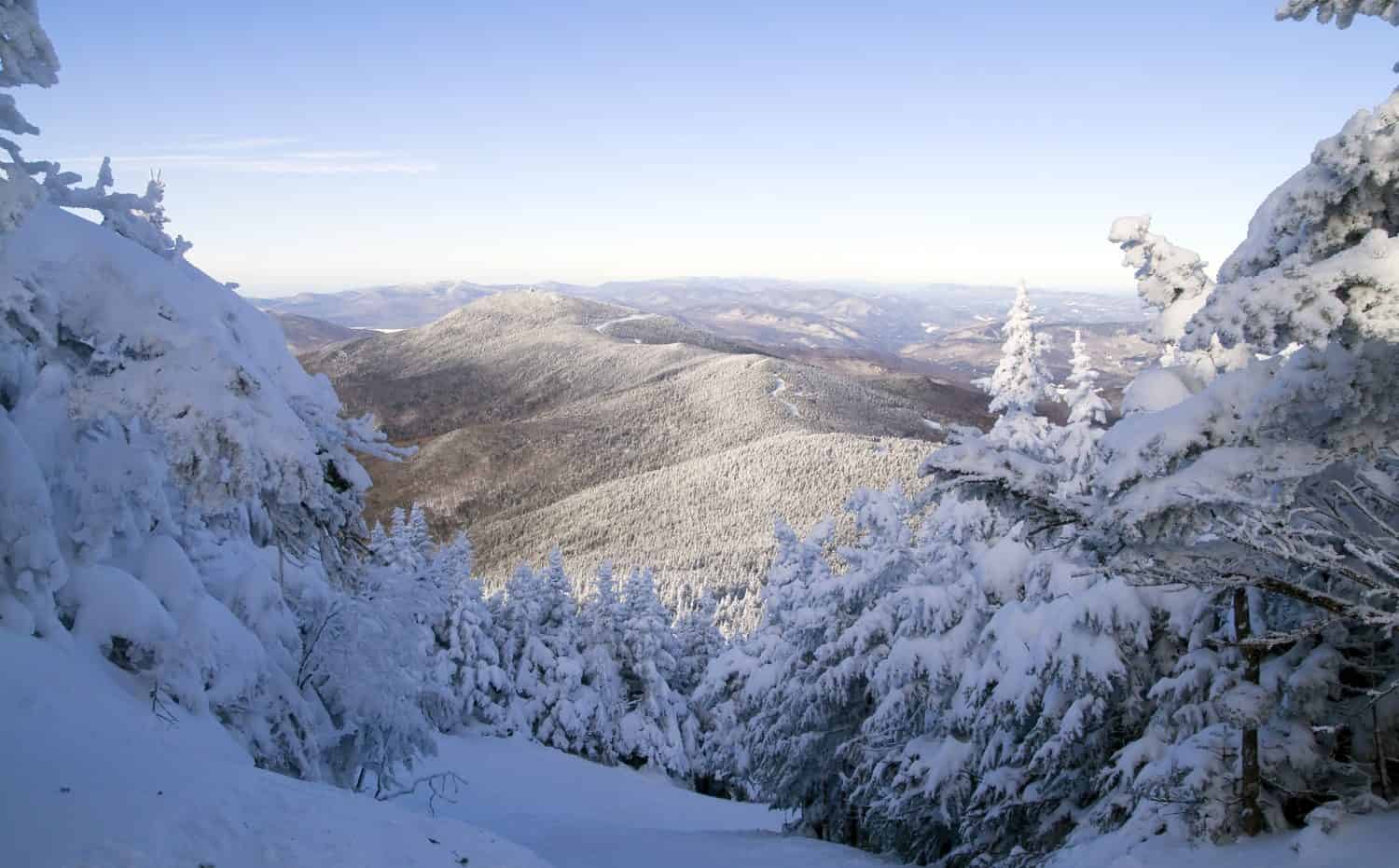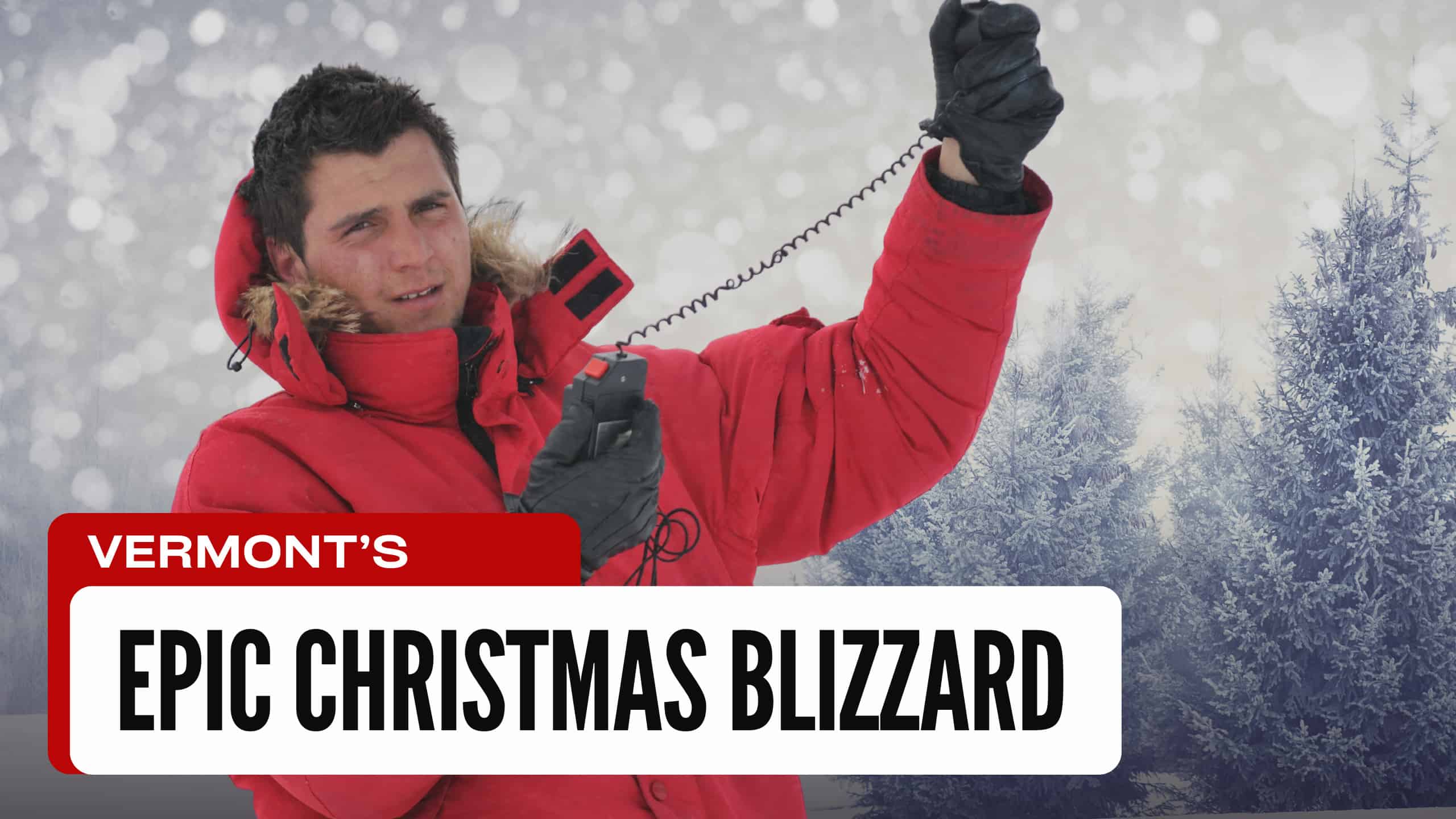Vermont is one of the snowiest states in the country. As the winter weather begins in December, it welcomes over 7 feet of snow each year. The winter can bring temperatures in the low 30s°F, especially in the mountains. With many ski resorts and recreational winter activities across the state, the snow is just one of the many reasons that it welcomes 13 million tourists every year. The winter of 1969 was different, bringing the most snow of any December.
The Week of Vermont’s Massive Christmas Snowstorm

On Christmas Day, Vermont experienced the worst snow of the last 100 years, stopping traffic amid the substantial snowfall.
©JackSpot/Shutterstock.com
When Vermont experienced its Christmas snowstorm, the weather continued from the brisk El Niño from the year before. The northeast region of the United States had a lot of snowy weather from the start. On December 22, 1969, northern New England saw up to 24 inches of snow in some areas, paired with ice-cold rain. However, the worst was still to come.
For 64 hours, starting on Christmas Day, the snow piled onto Vermont’s landscape and surrounding states. While Vermont has seen much lower temperatures, this day went down in history as Albany, NY’s coldest temperature of any December before or since. By December 27, 1969, Vermont experienced a record-breaking 30 inches of snow in Burlington, surpassed by another 44 inches in Waitsfield—heavy and wet snow combined with icy rain closer to Montpelier.
Vermont’s Wildlife During the Snowstorm

With extensive damage in rural areas to buildings and protective structures, the snowstorm took the lives of a lot of livestock.
©Edward Fielding/Shutterstock.com
Vermont is used to having significant snow, especially in the winter, and local wildlife knows to plan accordingly. They only have three animals that typically hibernate through this time – jumping mice, groundhogs, and bats – protecting them during the storm.
The biggest animal loss during the snowstorm was livestock. Due to the destruction and collapse of many rural buildings, many farmers lost their livestock during the storm.
Impact of the Multiple Snowstorms

As the snowstorms finally ended, Vermont had a lot of work ahead.
©nyker/Shutterstock.com
The governor – Deane C. Davis – pushed the National Guard to help clean the snow. Gov. Davis also issued a state of emergency after the storm. Cleaning up the snow became increasingly difficult with the wind. The shoveled and plowed snow was blown by the wind, again covering the streets. Even with Vermont’s typical snow preparedness for the winter, their removal vehicles failed to overcome the snow, and mechanical issues delayed progress even longer. The cleanup ended up taking weeks, with one complication after the next.
Many neighborhoods went without electricity and phone service in the days after the storm. Most of the New England region experienced severe ice storms, though northern areas of the Connecticut River Valley experienced the worst of them. The combination of moist warmth over the cold air resulted in up to 6 inches of ice, climbing trees, and powerlines. Many buildings, including homes and industrial structures, experienced collapsed roofs and significant damage. This ice lasted about 6 weeks.
Other Major Blizzards in Vermont

The only months without snow are typically in late spring through summer.
©Marcio Jose Bastos Silva/Shutterstock.com
Vermont has had its fair share of significant snowstorms. It averages 89 inches of snow annually, though several snowstorms resulted in a significant amount of snowfall. As recently as 2018, the most snow ever experienced in November was almost half of what Vermont gets every year. Some snowstorms even come early, though the earliest snow of the season has been seen in September as recently as 1991.
Thank you for reading! Have some feedback for us? Contact the AZ Animals editorial team.








